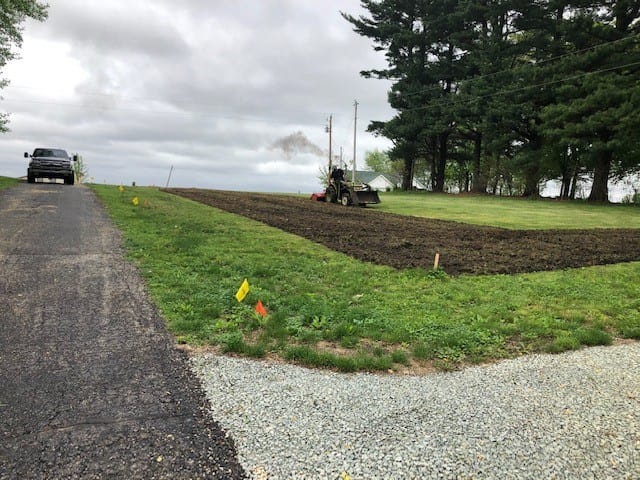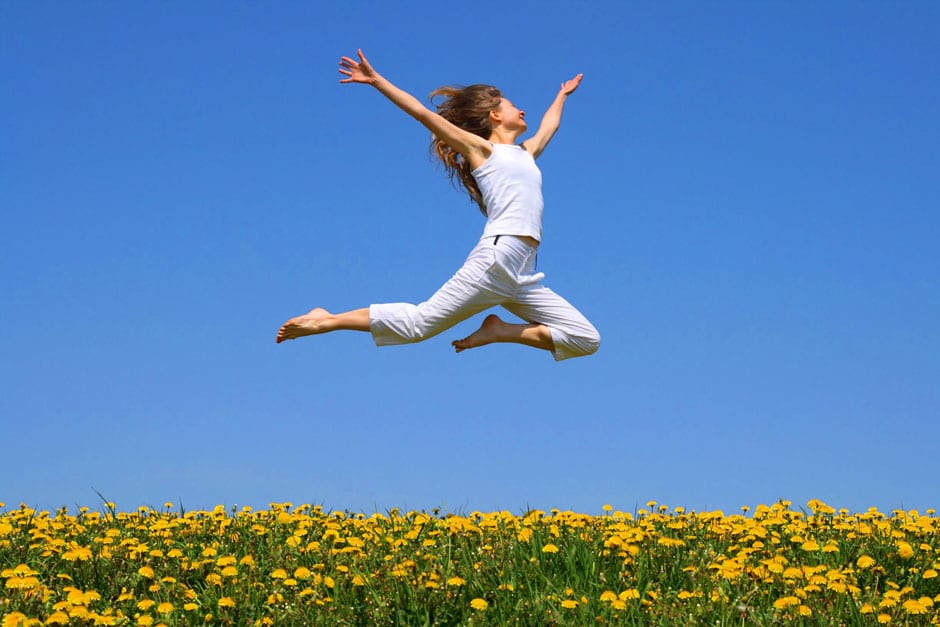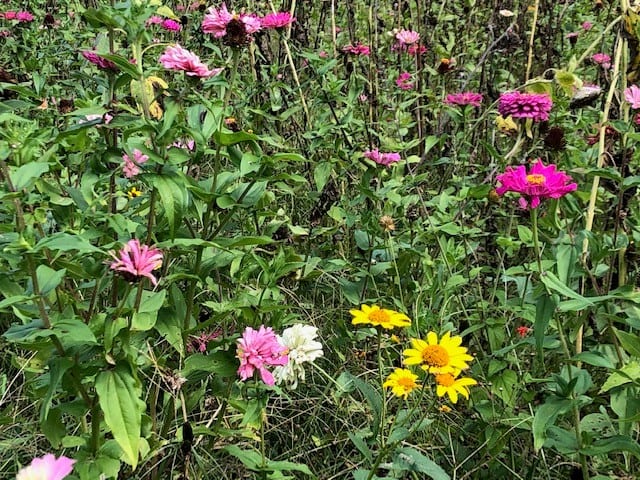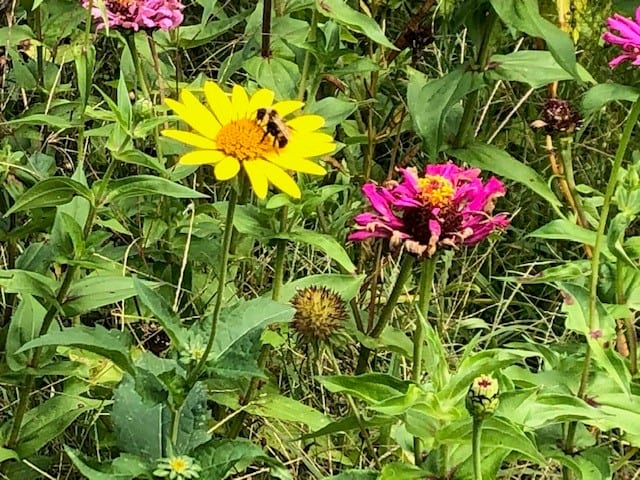As stated in Lawn to Meadow – Part I, traditional turf lawns are food deserts that are unwelcoming for both birds and insects. In addition, trying to achieve the “perfect” lawn requires a lot of chemicals, water, and effort. Going from turf to flowering meadow is easier than you might think.
Step 1 – Remove the Grass
There are several methods for removing existing turf grass and you can decide which suits your needs.
Do not skip this step!
- Chemical Spray – 3x about 6 weeks apart during the growing season
- Smothering (cardboard/plastic/newspaper)
- Digging

Since we were removing about 1/3 acre of grass, we felt like the most efficient method would be to use a chemical spray. GASP! However, due to weather and scheduling issues we ended up skipping the spray, cutting the grass really short and tilling. BIG MISTAKE. This just wakes up all those weed seeds lying dormant in your soil and doesn’t ELIMINATE the grass. Grasses are the main reason why wildflower areas fail.
Step 2 – Sow Your Seed
Notice Step 2 is NOT till the area, like I did. Do you see a trend here – learn from my mistakes!
I wanted a front yard full of flowers that would attract birds, bees and butterflies. I worked with Gochenour Ag Service, a local seed dealer for Applewood Seed Co., to select their Midwest Wildflower Mix. The mixture included native and non-native species: Black-Eyed Susan, Clasping Coneflower, Corn Poppy, Grey-Headed Coneflower, Indian Blanket, New England Aster, Ox-Eye Sunflower, Plains Coreopsis and others. Since I wanted lots of color the first year, I supplemented with free sunflower seeds I picked up from the Marshall County SWCD food plot seed program, as well as bulk zinnia seeds purchased from Gochenours. Total cost of seed was about $125.
There is no secret to sowing the seed. Just throw it out there on top of the bare soil as evenly as possible. We didn’t cover it with straw or additional soil.
Step 3 – Water
We planted the meadow in early June – much later than I wanted to. That meant we had to keep the area watered because we didn’t get much rain for several weeks. We ended up watering about six times in the first month because it was hot and dry but did not continue to water after that.
Very Happy With The Result
We had several reasons for creating this wildflower meadow:

- Reduce mowing time
- Create habitat
- Create food source
- Create visual appeal
I would say we achieved all four so definitely a success! The area has been alive with butterfly, bird and bee activity all summer long. There is more grass mixed in with the flowers than I would like, but I can overlook that for all the other positives. I’m not sure how I’m going to manage the grass next year, but I have all winter to decide. Stay tuned, I’m sure I will have more to say in Year 2 of the Wildflower Meadow.
My biggest affirmation came when I saw someone stop, get out of their car and take pictures. Yes, that is MY yard!



Hi, I’m Debbie Palmer. I received a BS in Horticulture from Purdue University. Here at LMEF, I am responsible for outreach presentations, monitoring the lake and it’s wetlands, project manager for restoration and research projects, and act as a community resource for all things related to the well-being of Lake Maxinkuckee and its surrounding watershed. I completed Indiana Watershed Leadership Academy, volunteer with the Indiana Clean Lakes Program, Hoosier River Watch and Marshall County Lakes and Waters and serve as a Board Member for Indiana Lakes Management Society.


Recent Comments